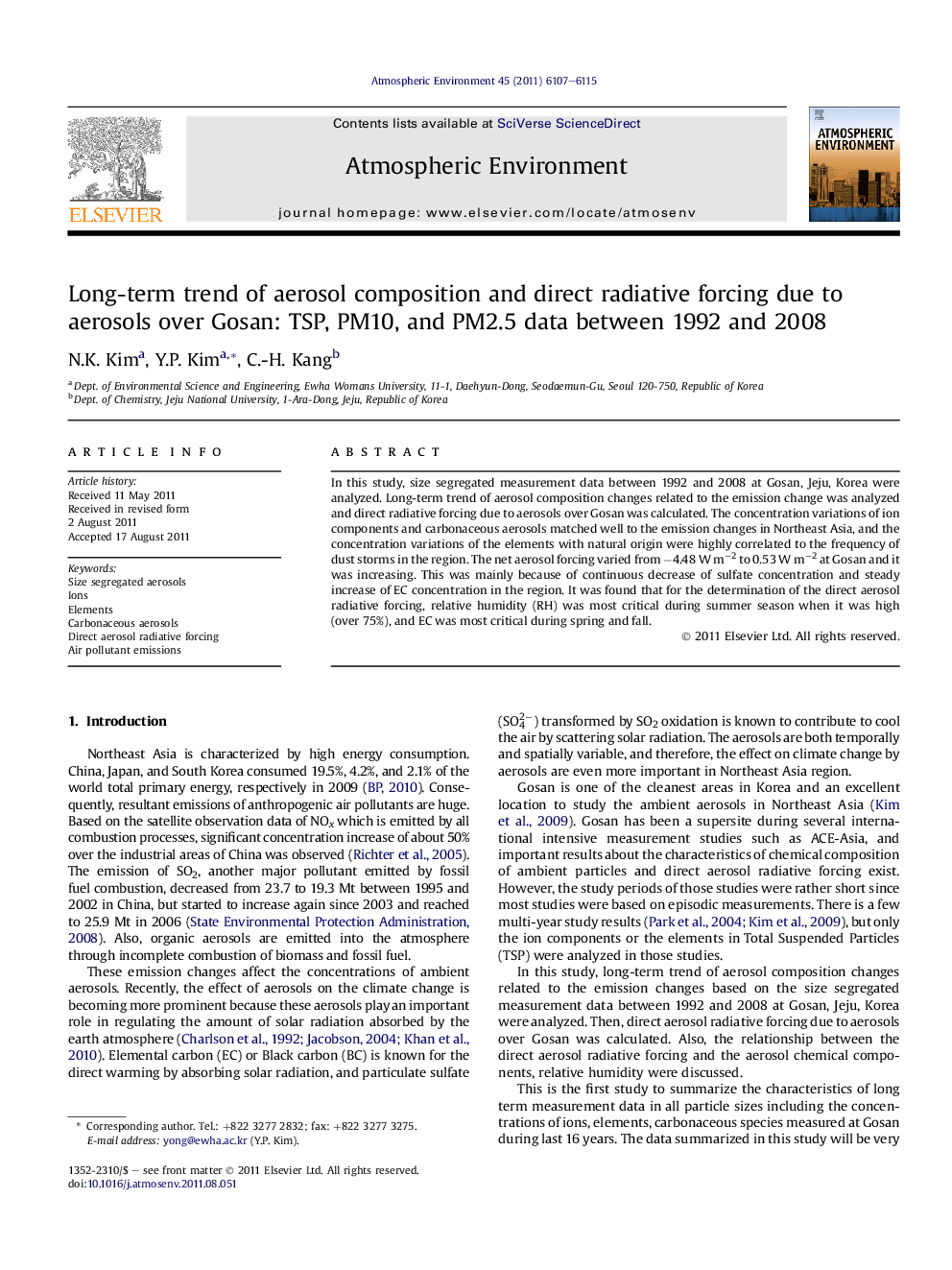| Article ID | Journal | Published Year | Pages | File Type |
|---|---|---|---|---|
| 4439352 | Atmospheric Environment | 2011 | 9 Pages |
In this study, size segregated measurement data between 1992 and 2008 at Gosan, Jeju, Korea were analyzed. Long-term trend of aerosol composition changes related to the emission change was analyzed and direct radiative forcing due to aerosols over Gosan was calculated. The concentration variations of ion components and carbonaceous aerosols matched well to the emission changes in Northeast Asia, and the concentration variations of the elements with natural origin were highly correlated to the frequency of dust storms in the region. The net aerosol forcing varied from −4.48 W m−2 to 0.53 W m−2 at Gosan and it was increasing. This was mainly because of continuous decrease of sulfate concentration and steady increase of EC concentration in the region. It was found that for the determination of the direct aerosol radiative forcing, relative humidity (RH) was most critical during summer season when it was high (over 75%), and EC was most critical during spring and fall.
► Size segregated measurement data between 1992 and 2008 at Gosan were analyzed. ► Concentration variations of aerosols were well matched to the regional emissions. ► Concentrations of natural elements were highly correlated to dust storm frequency. ► The net aerosol forcing varied from −4.48 W m−2 to 0.53 W m−2 and it was increasing.
